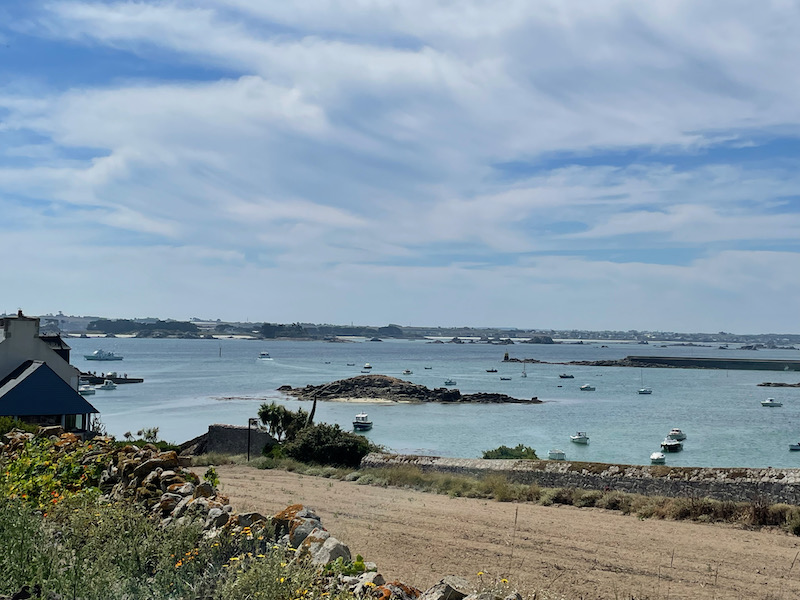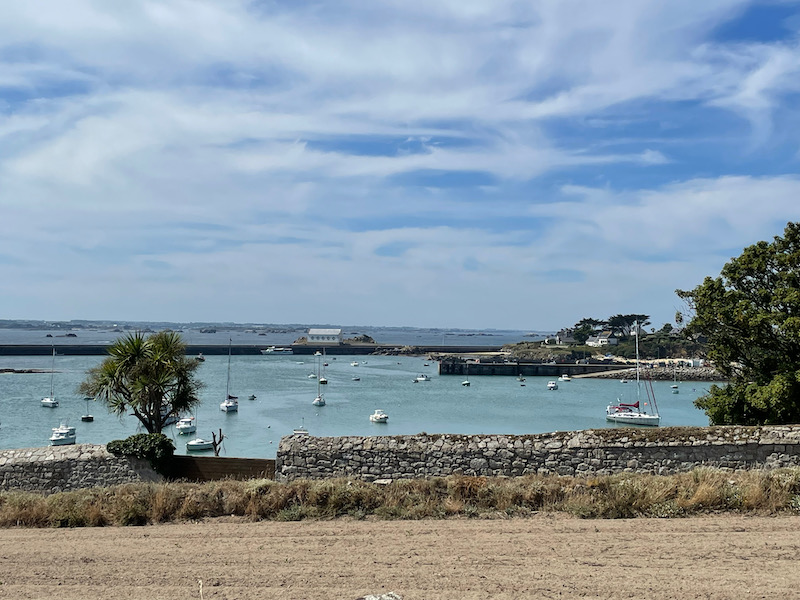Our Blog - Ile de Batz, Roscoff, France
The Ile de Batz is just off the coast of Roscoff and is accessible by a ferry that runs year-round. The first proven traces of human presence date back more than 5,000 years, to a period when the island was probably still connected to the mainland. The remains of an ancient Bronze Age necropolis are still visible in the one of the gardens. In the 6th century, a Welsh monk named Paul Aurélien arrived with a handful of companions to evangelize this part of Brittany. He founded a monastic community on the island and became the first bishop of Léon. In the 17th century, the island was known for harvesting seaweed, which was used to improve the soil, but also as a fuel for fires (once it was dried). By the 19th century, the economy had moved to more agriculture, mainly growing potatoes, cauliflower and artichokes. The population has been declining, with only about 450 people listed as actually living on the island. In 2018, over 61% of the dwellings on the island were listed as secondary homes.
We took the ferry across at low tide, which meant we walked along the long bridge, out into the bay, to wait for the boat. Here you can see pictures of the bay at low tide, and how rocky it is.
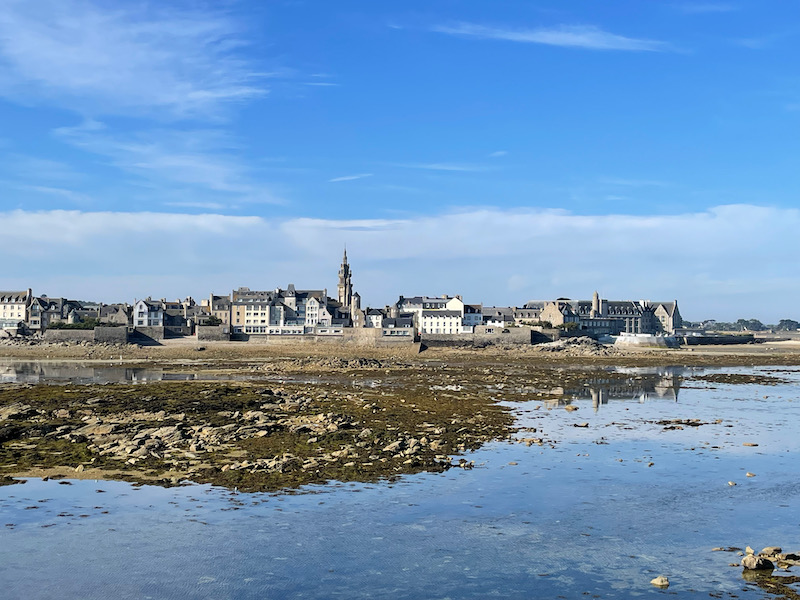
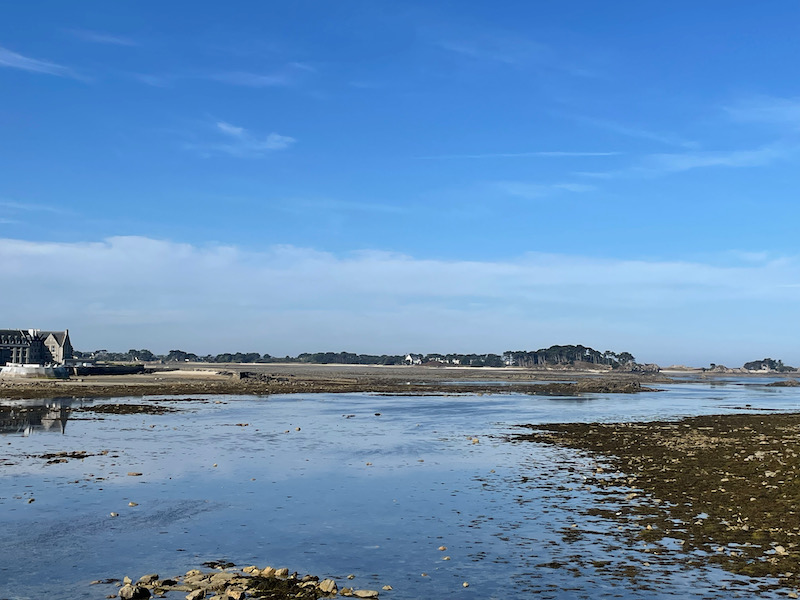
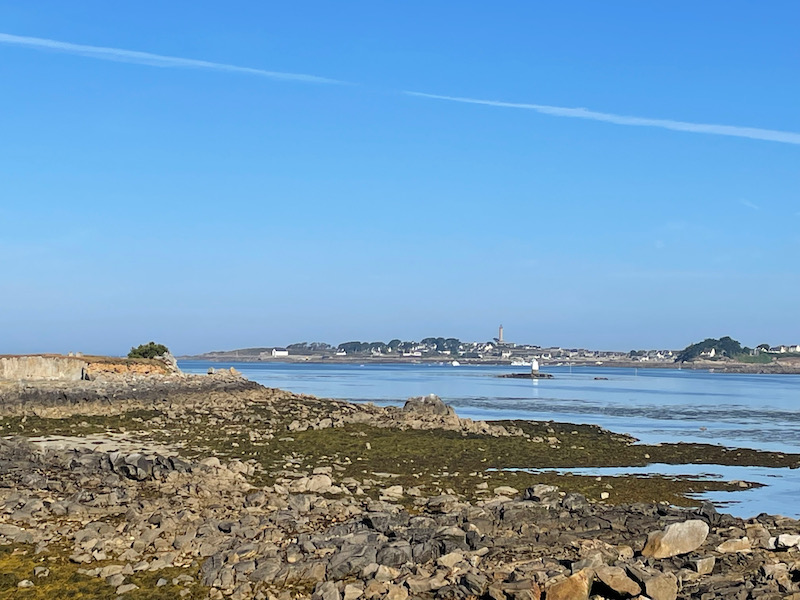
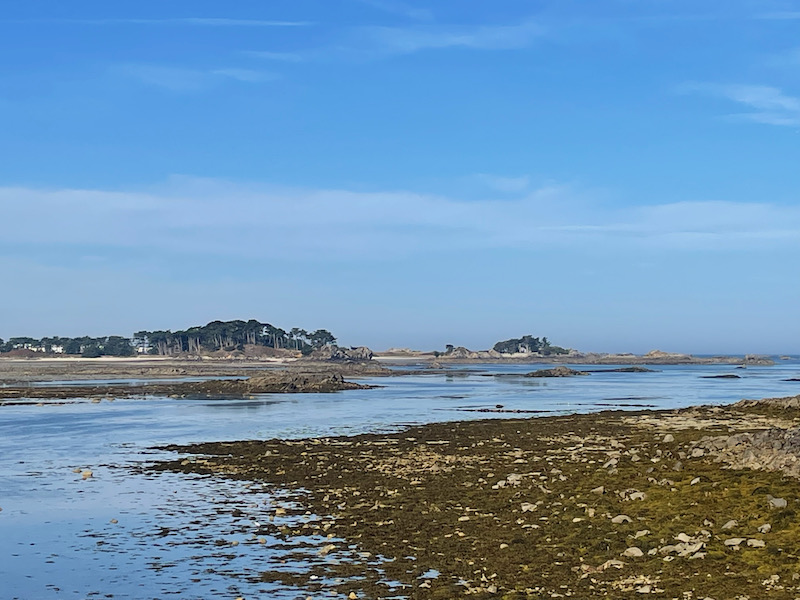
Lucy got some play time on the beach, which she really enjoyed! In general, most of the beaches have signs that say that dogs are not allowed, but it seems not that many people care. Most of the time, we tend to take Lucy to the beach early in the morning, before any families with kids are out. But even on nice sandy beaches, we really didn't find many people on them. Look at those dirty paws!
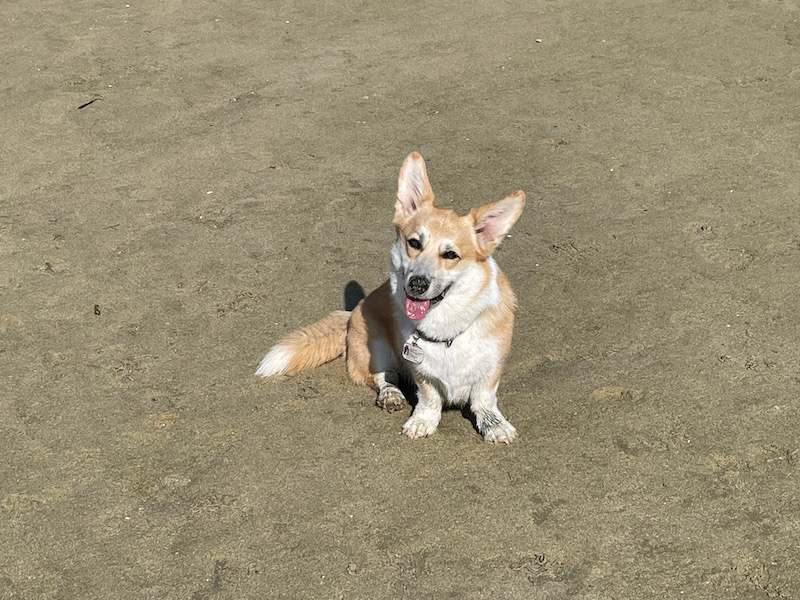
We did a walk around the island, which isn't that big, to get lunch and see a few of the sights. One of the main sights is the lighthouse, which was inaugurated in 1836. It was electrified in 1962 and automated in 1995. Its light, set over 260 feet above sea level, produces a white light with four grouped flashes every 25 seconds, which are visible from 23 miles away.
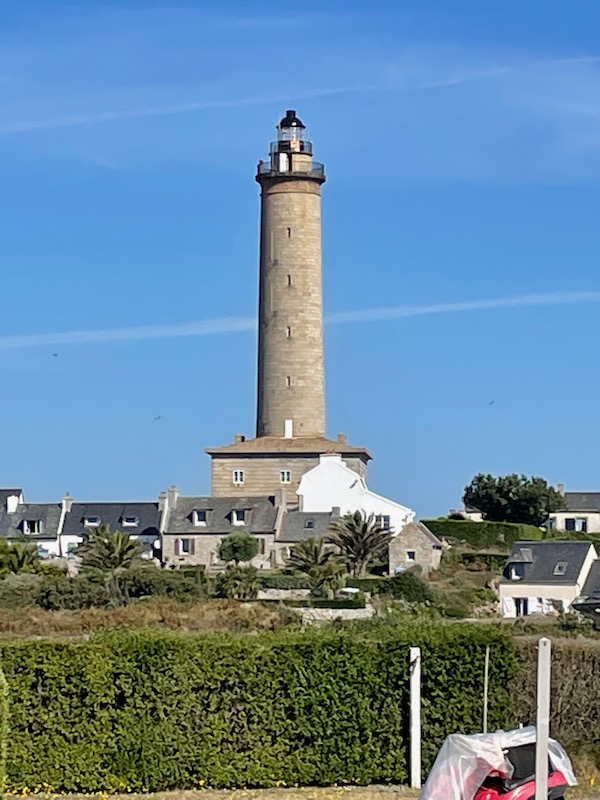
The coastline is fairly rocky, similar to the coast at Roscoff. Every once in awhile, there is a little tiny patch of white sand, and then the rocks start again.
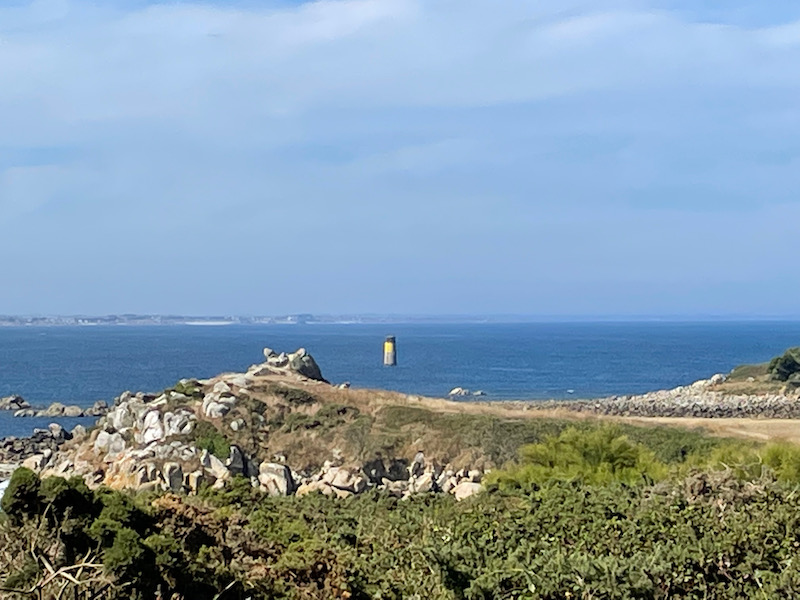
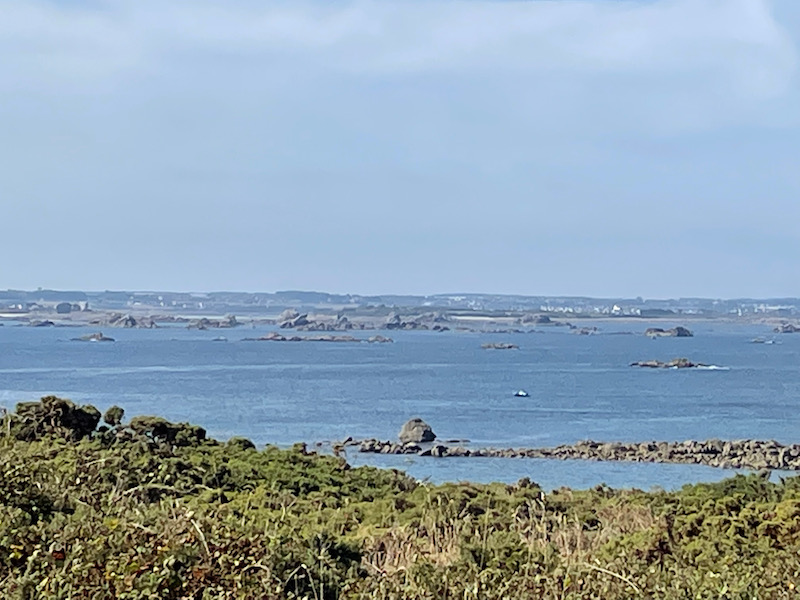
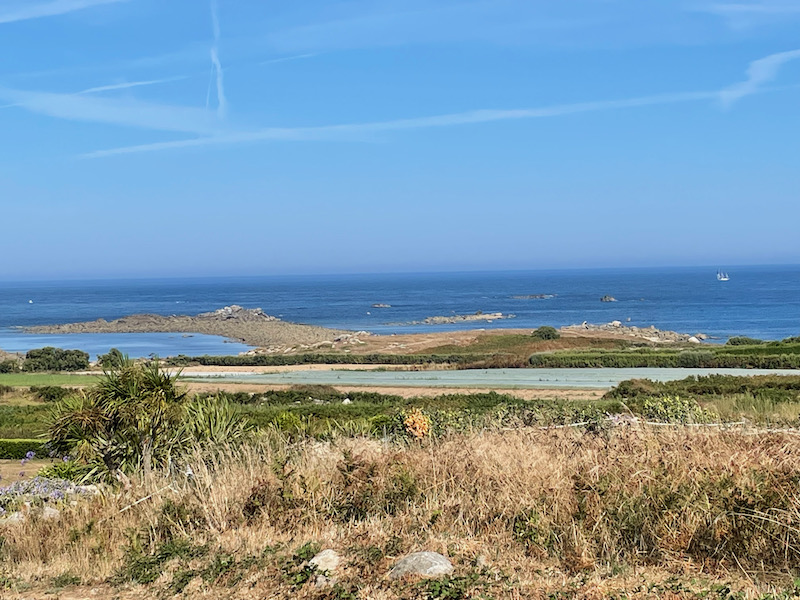
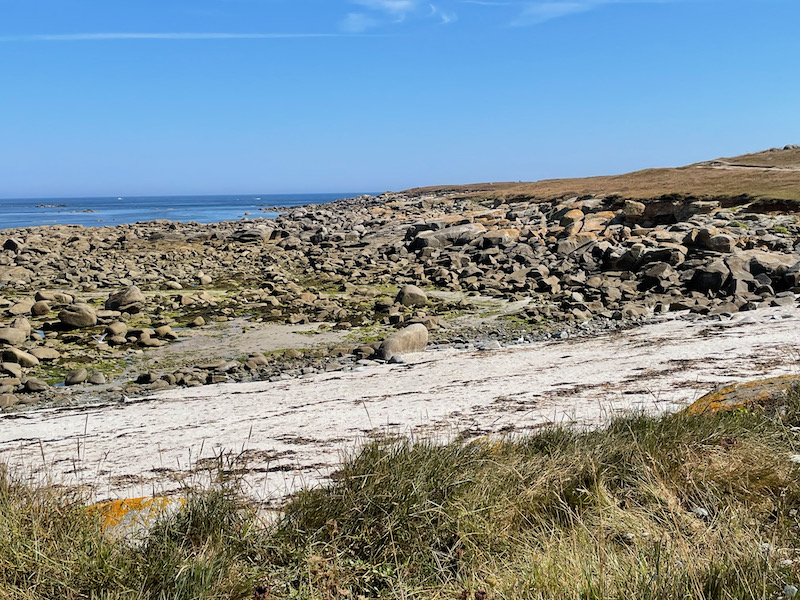
This is an interesting house ... with a round tower and literally in the middle of nowhere!
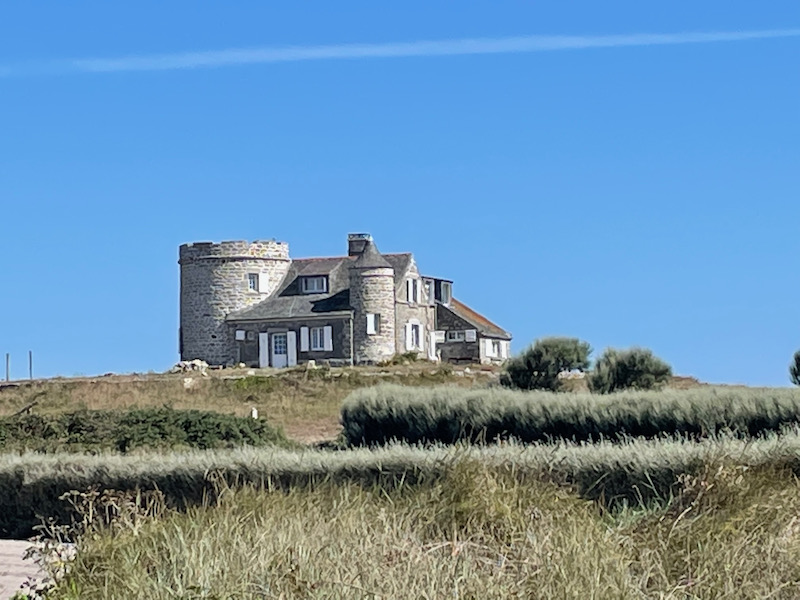
The main church is the Church of Notre-Dame-du-Bon-Secours (our Lady of Good Hope). The original church on this site dated back to the 1790's but it was deemed too small and destroyed in 1873. The current building is a neo-Romanesque style building, consecrated in 1875.
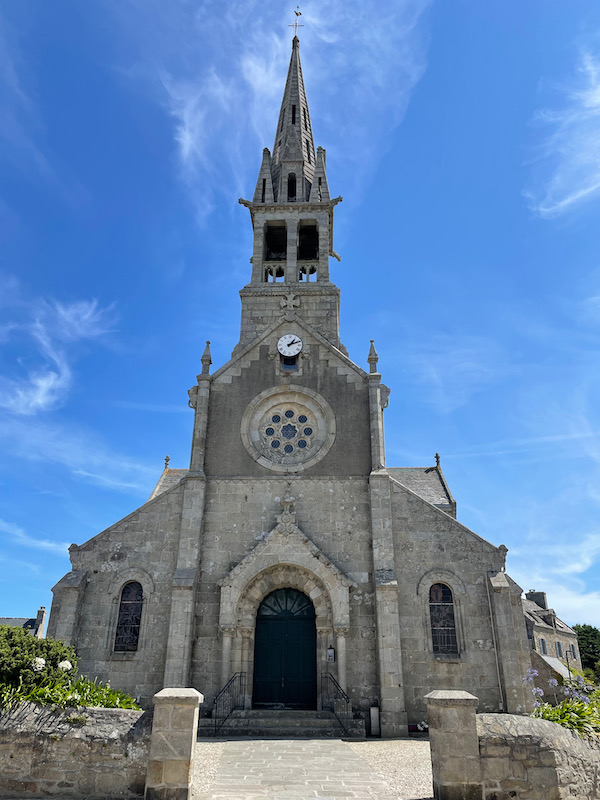
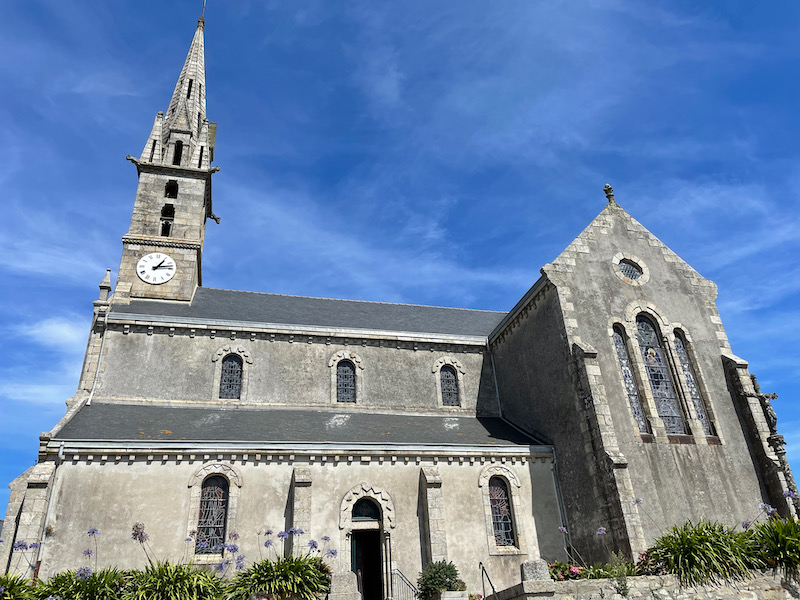
The church has a nave and 2 side aisles with no side chapels. You can see the arches here are very Romanesque (rounded), and the wooden roof is painted blue.
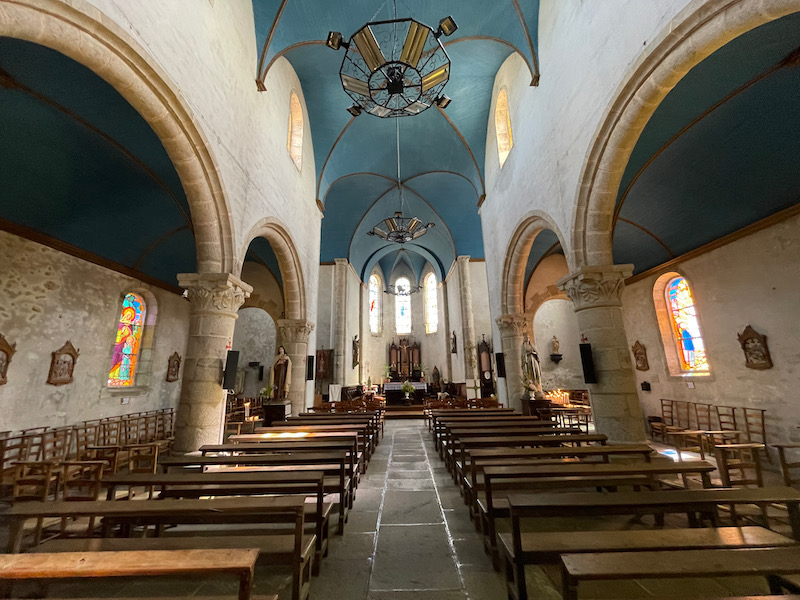
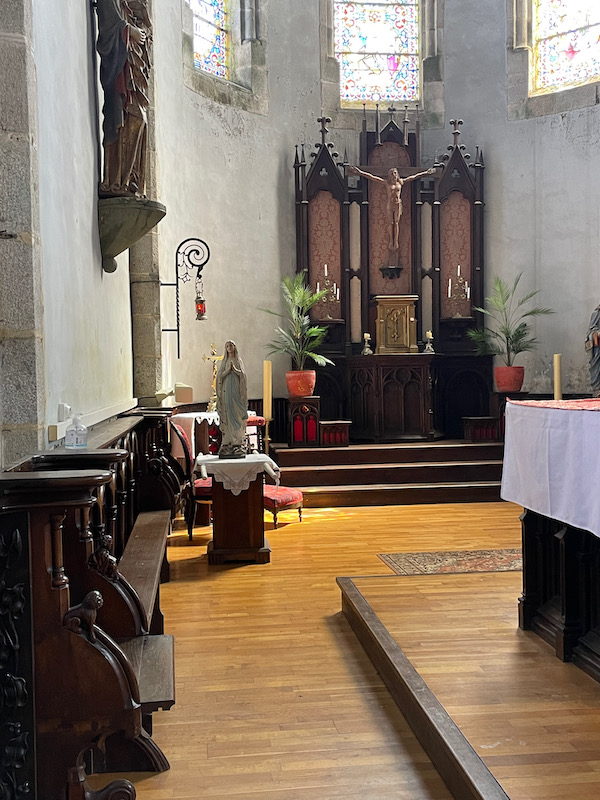
The stained-glass windows in the choir were installed in 1895 and were done by a glassmaker in Paris. You can see a difference between this one and the 2nd picture, which is a more recent addition.
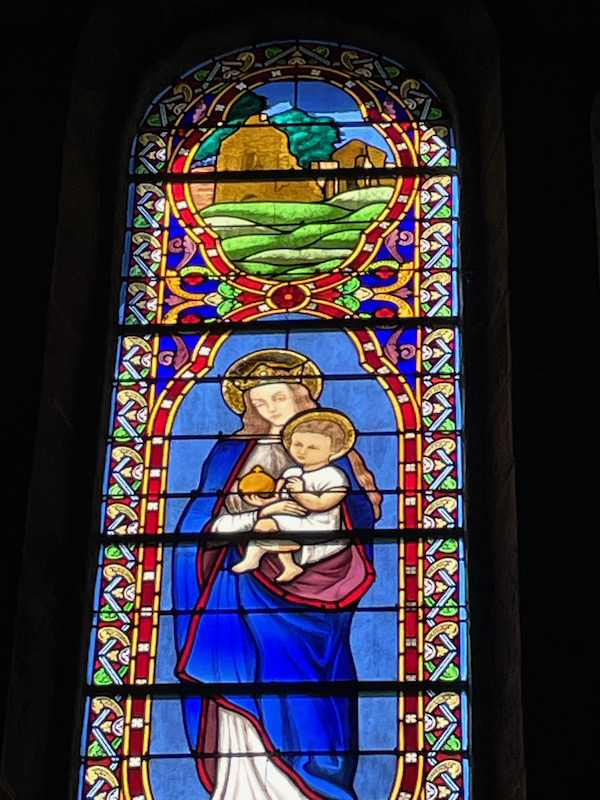
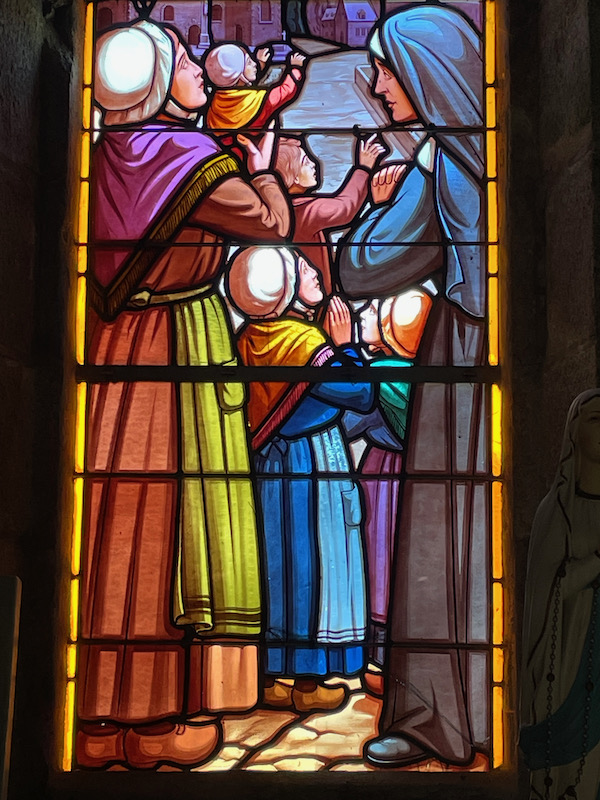
Heading back to the port, the tide had come in and the boats were now all sitting upright in the water. When we got back to Roscoff, instead of getting off at the bridge, the boat went all the way around to the port in the center of town.
